Huawei's Watch GT has no time for Android's Wear OS
- Published
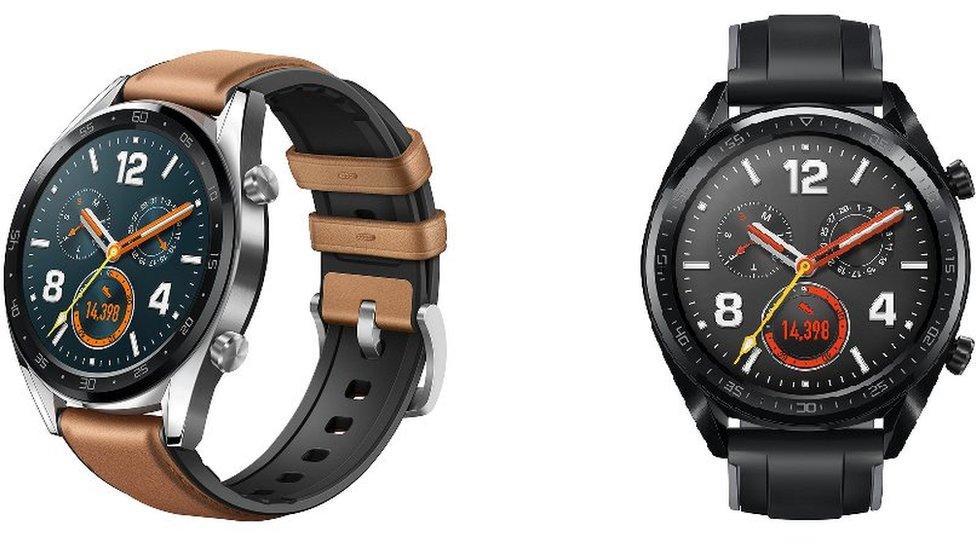
The Watch GT can run for up to a month between charges but lacks an app store
Huawei has decided not to use the wearable-tech version of Android in its latest smartwatch, opting instead for an in-house operating system.
The company said the decision to use Lite OS, external had been taken in part to maximise battery life.
It marks a setback to Google's Android-based Wear OS, which ran Huawei's last two generations of smartwatches.
The Chinese company also unveiled a smartphone with a unique wireless power facility.
The Mate 20 Pro can:
be recharged without having to be plugged in
wirelessly power other compatible devices
Allow X content?
This article contains content provided by X. We ask for your permission before anything is loaded, as they may be using cookies and other technologies. You may want to read X’s cookie policy, external and privacy policy, external before accepting. To view this content choose ‘accept and continue’.
Extended life
Android dominates the smartphone market, accounting for about 85% of all shipped handsets, according to IDC, external.
However, its dominance did not extend to smartwatches, the market research company said.

Huawei unveiled its new devices at a press conference in London
None of the five top-selling smartwatch brands currently uses Wear OS and it is installed on only 10.3% of all smartwatches shipped within the July-to-September period in Western Europe, according to IDC's data.
Instead, Apple, Fitbit, Samsung and Garmin are among those to have adopted proprietary platforms. Now, Huawei is doing the same for its Watch GT.
Lite OS had previously been used by Huawei to power a more basic fitness tracker. In addition, it has been licensed by others to power smart doorbells, internet-connected letterboxes, streetlights and smart energy meters, among other products.
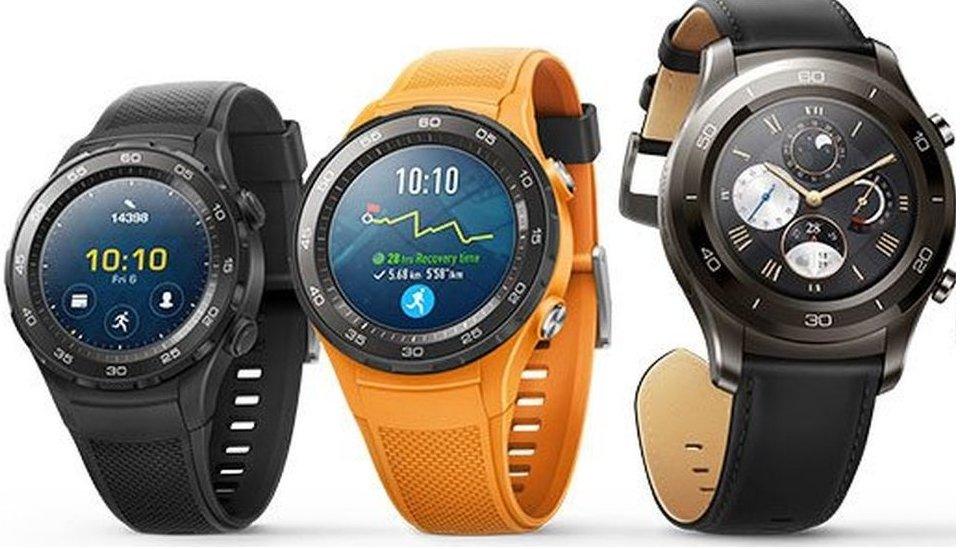
Huawei's previous Watch 2 smartwatches were among the bestselling Wear OS devices
Huawei said one benefit of its move was to make use of Watch GT's new "dual chipset architecture":
a low-power-consumption section for simple tasks, including sleep analysis
a more battery-hungry segment for complex activities, such as providing sports coaching tips
And the device now offered three modes with differing battery life:
up to 30 days if the smart capabilities were limited to showing notifications received via a smartphone and monitoring the user's heart rate
at least two weeks if sleep analysis is also provided, in addition to a total of 180 minutes of active exercise-tracking
22 hours if all the sensors were turned on and the screen kept lit
The timepiece is compatible with both iOS and Android handsets.
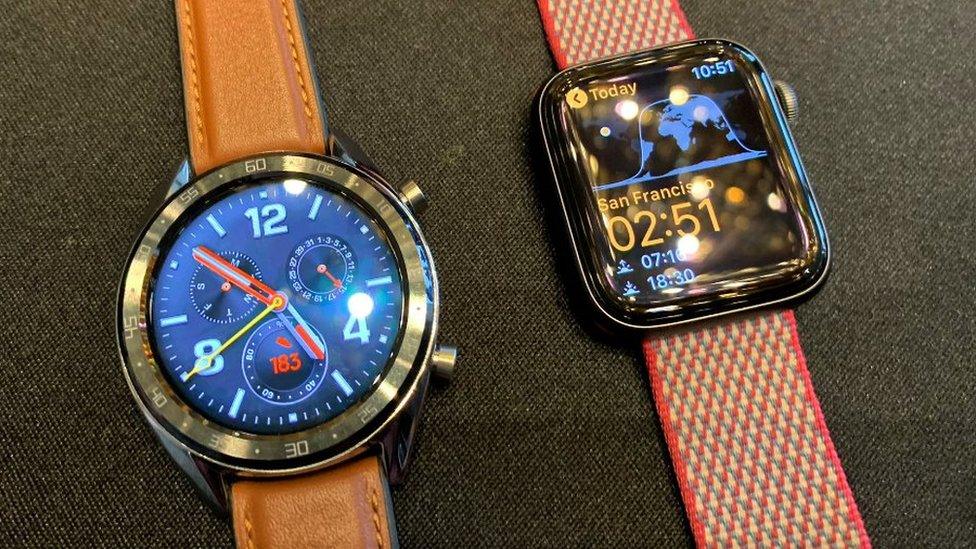
Huawei's Watch GT has less functionality than Apple's Watch Series 4 but is about half the price
"Huawei has been very clear that it wants to compete more with Fitbits and Garmins than true smartwatches with their own [data] connectivity," said Marta Pinto, from IDC.
"It said it has surveyed what people do with a watch and has tried to cover the things people actually use."
She added that one benefit of offering more limited abilities was that the Watch GT's price was lower than its predecessors - between €199 (£174) and €249, depending on the design.
Allow X content?
This article contains content provided by X. We ask for your permission before anything is loaded, as they may be using cookies and other technologies. You may want to read X’s cookie policy, external and privacy policy, external before accepting. To view this content choose ‘accept and continue’.
Smartwatch owners typically use fewer apps on any of the various platforms than had once been forecast. But one industry-watcher suggested Huawei's device could be too limited.
"The battery life is massive but will that make up for the lack of [the social fitness network] Strava on there?" asked David McQueen, from the consultancy ABI.
"You can't even play music from it. It's quite a dumbed-down device.
"Perhaps people don't want a smartphone on their wrist with all the applications that involves - but you still need the key ones."
Ultra-wide photo phone
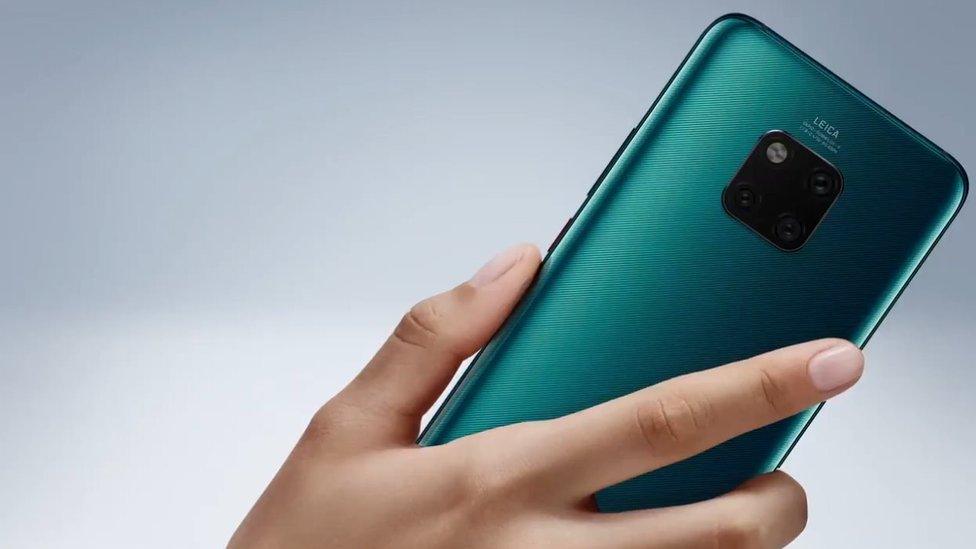
The new handsets feature three cameras on their rear plus a flash
The new Mate 20 handsets are powered by Android 9 but have several distinguishing features:
the Pro version introduces wireless reverse charging, which allows its relatively high-capacity 4,200mAh battery to be used to recharge other devices that share the Qi power-transfer standard
an "ultra-wide angle" lens has been added to the back of the models, joining the wide angle and telephoto options included last year
machine-learning techniques are used to automatically select the best lens for each shot and to offer new effects, including the selective colourisation of video images in real time
Unlike the company's recent P20 Pro, however, there is no dedicated monochrome camera as Huawei says it no longer needs one to enhance image detail.
Business users are being targeted by the ability to wirelessly link the handsets to Bluetooth-enabled screens for presentations.
And the Pro model offers both a fingerprint sensor beneath part of its screen as well as a depth-sensing facial scanner.

The handset can make the background appear in black-and-white while keeping the subject in colour while filming a video
"It's expensive, but Huawei is pitching this to a niche market - the business sector - which is still growing, while the consumer smartphone market in Europe is declining," said Ms Pinto.
"Companies have had to adapt to the EU's new GDPR [General Data Protection Regulation] privacy law, which has discouraged the use of bring your own devices to work."
Many of the details had leaked in advance.
But the company did have one big surprise: the Mate 20 X. The model has a 7.2in (18.3cm) display - larger than some tablets - a companion stylus and a 5,000mAh battery.
In addition, the device has a snap-on games controller and is being pitched as an alternative to Nintendo's mobile console, the Switch.
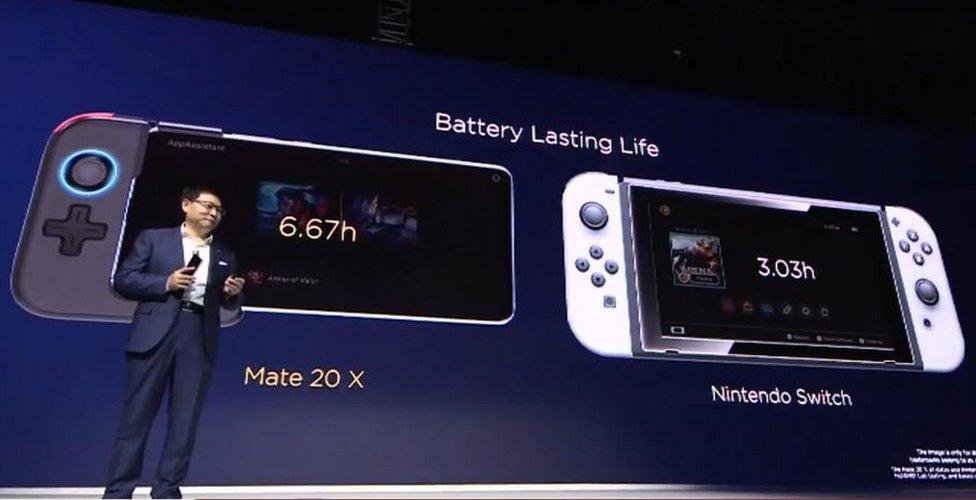
Huawei boasted that gamers would be able to play with its largest phone for twice as long as on the Nintendo Switch
Allow X content?
This article contains content provided by X. We ask for your permission before anything is loaded, as they may be using cookies and other technologies. You may want to read X’s cookie policy, external and privacy policy, external before accepting. To view this content choose ‘accept and continue’.
The basic model of the Mate 20 will cost €799-€849, the Pro model €1,049, and the X €899.
Huawei overtook Apple to become the world's second bestselling smartphone brand in the April-to-June quarter, behind Samsung.
But it is as yet unclear whether the Shenzhen-based company can achieve its goal of selling more units than its Californian rival for 2018 as a whole.
Allow X content?
This article contains content provided by X. We ask for your permission before anything is loaded, as they may be using cookies and other technologies. You may want to read X’s cookie policy, external and privacy policy, external before accepting. To view this content choose ‘accept and continue’.
"Having a few useful differentiators to what else is on the market should help," said Mr McQueen.
"The Mate 20 is obviously targeting Samsung's Galaxy Note 9 but I don't see why it shouldn't challenge Apple's XS Max too."
- Published9 October 2018
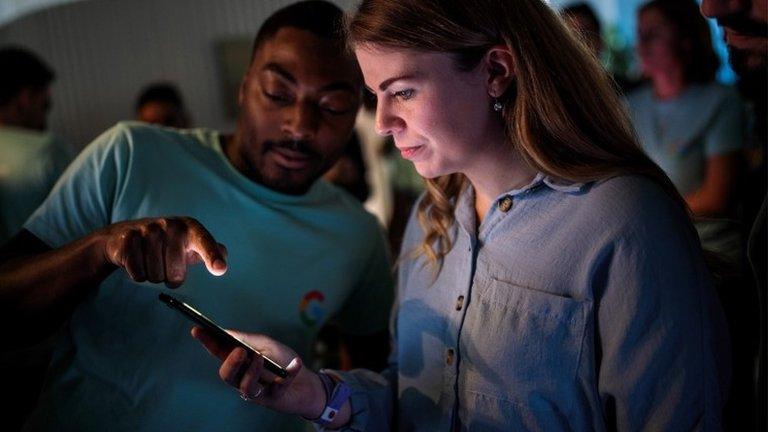
- Published12 September 2018
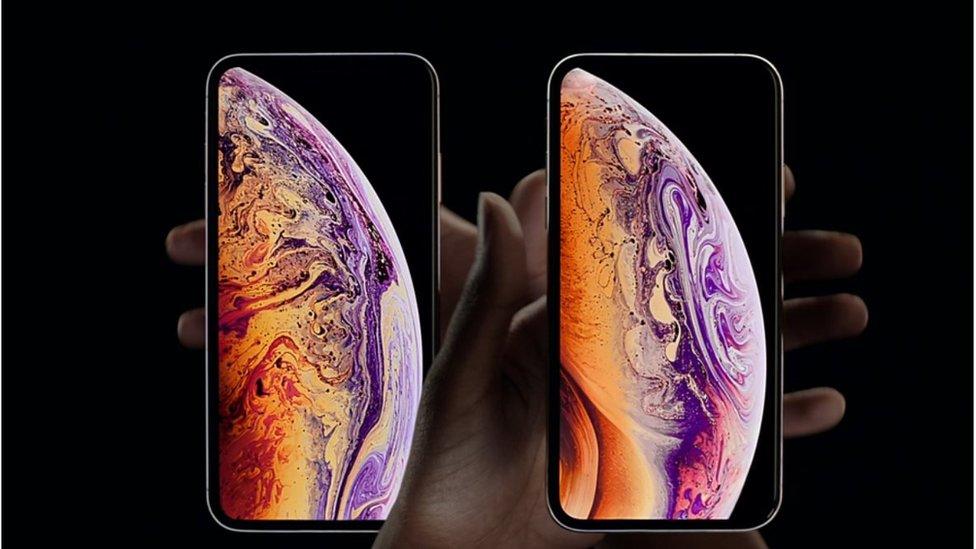
- Published9 August 2018
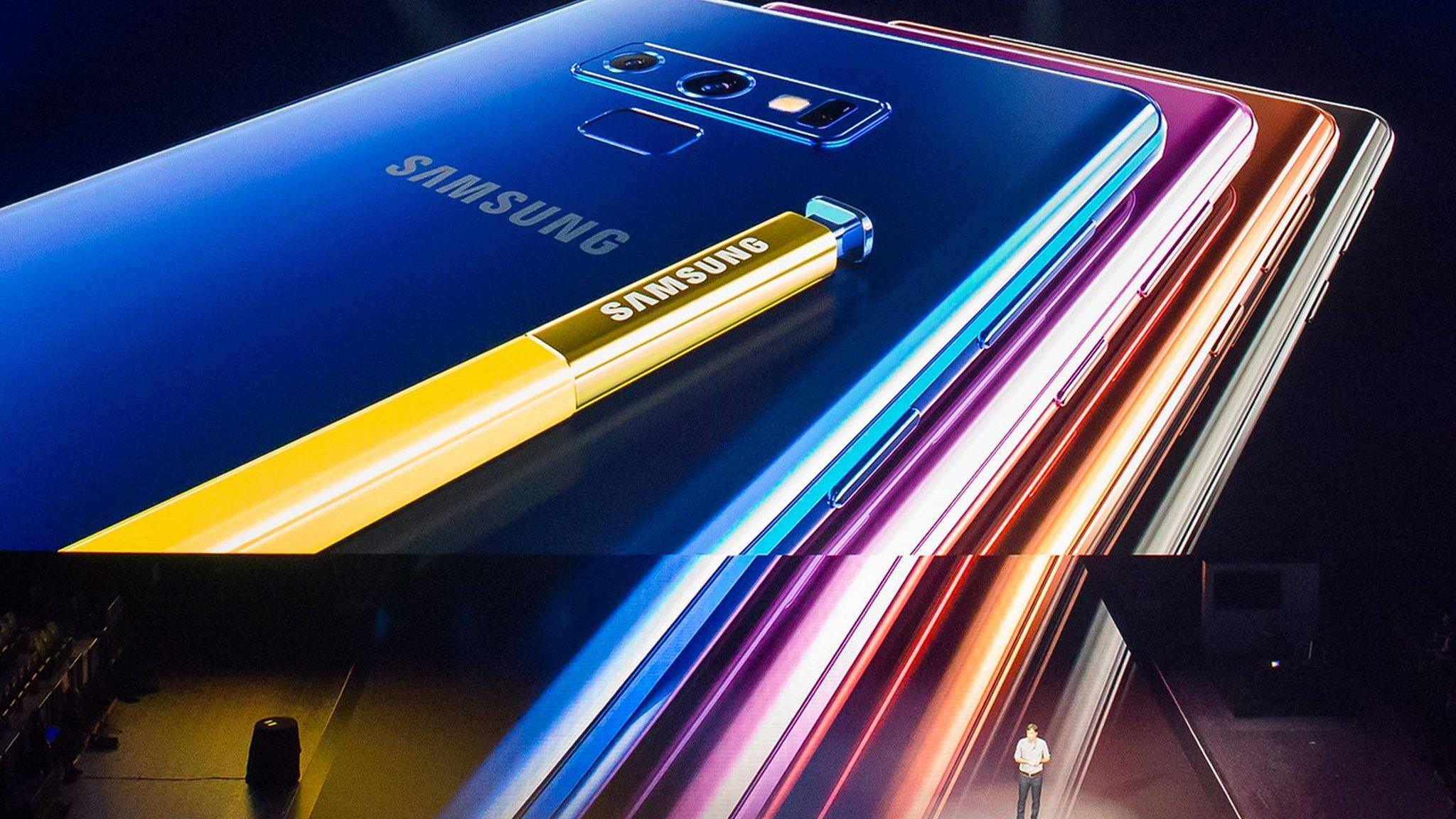
- Published6 August 2018
